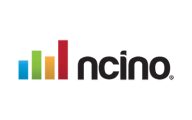Most Australian B2B technology vendors I’ve worked with have access to a steady stream of high quality ‘corp’ content—but with so much, it can be hard to know just how best to use it.
Some scenarios that may feel familiar are:
- We need to get something in market fast, but budgets are tight. Should we just roll out the global campaign?
- There’s so much great content, but what is going to be most valuable for our market?
- How do we leverage the ‘corp’ content, without looking like a ‘corp’ campaign?
It goes without saying that coming from the land ‘down under’ means we see ourselves as a bit unique to the rest of the world. Although many global themes are highly topical and interesting, making them relevant for our market invariably requires a level of tailoring. Plus there’s little subtleties that we may need to consider before we just reuse ‘corp’ content and experiences such as accents, spelling, tone, imagery, and our customers’ comfort with sharing their data to get something of perceived value.
A B2C EXAMPLE THAT TECHNOLOGY B2B VENDORS CAN LEARN FROM
It was early 2000 and Land Rover was about to launch their New Range Rover vehicle. They had invested millions of dollars in a swanky global strategy and creative execution, and the Australian business and agency received the directive to execute it locally in its entirety.
This made us all very nervous. It felt too big, and too polished for what we felt our audience would feel comfortable with. It also required Australian customers to go to a UK landing page and enter a lot of data to receive exclusive global updates—more than what should have been required for this kind of information. We strongly felt Australian customers wouldn’t want to do this, and after some negotiation we managed to convince ‘corp’ to let us test a global vs. local execution.
The local execution leveraged the global strategy and creative but brought it down a notch. The results spoke for themselves—our local application of the global strategy became a stand-out performer on the world stage, proving Australian customers are different and needed the local touch to increase engagement. We subsequently earned the right to do things our way.
HELPING B2B TECH VENDORS TO FIND GOLD NUGGETS IN THEIR ‘CORP’ CONTENT
I know the temptation of a ready-made global campaign is always there, but I also know that rolling out a global campaign in its entirety to Australian customers is unlikely to work, plus it presents a big risk as you might not get a second chance with your audience.
Don’t get me wrong, I do see a lot of super valuable content coming out of ‘corp’ but it’s important that you know how to get the most out of it so it adds value to your project and to your customers:
Here’s my recommended approach:
- Hold back from fully immersing yourself in the global content until you have a clear view on what you are trying to achieve locally. What are your objectives? Who is your audience? What existing activities are in-flight? What timelines and budgets are you working to?
- Then start mapping out the local situation that you need to keep top-of-mind to ensure relevance for your customers. This is likely to include such things as regional trends and insights, problems your audience needs to solve, your product, solution and/or service differentiators and any local customer logos and/or case studies that can help you grow credibility and provide evidence in this space.
- Once you have a clear view on this, switch to an audit of your global content. With a solid structure in place, it’s a tried and proven way to quickly work through a reasonable volume of content and identify what’s available, who it’s relevant for and where it fits in your customer’s buying journey.
- Then think about the value for your audience, any localisation needed and give it a rating on a scale from one to five – where five is excellent and can be used as is, through to zero – irrelevant for your audience or project. Be tough on it, your audience will be!
- Now you can focus in on the assets that scored the best ratings; the ones that are most likely to add value to your audience and project. And consolidate them with the best of your local narrative and content.
I find that the most valuable global content is around thought leadership—access to world-leading insights and trends that can support your local customers with their own understanding. They are often in the format of research reports, eBooks and infographics; video is still great, but may be more impactful to have a local accent, with the exception of webinars where global leadership and expertise is seen as a further value-add. It’s important to note that global case studies rarely ‘land’ with local audiences unless it’s a recognisable brand.
BUILDING A ‘CORP’ AUDIT INTO YOUR BAU PROCESSES
For one of our clients, we now have a solid system for conducting an audit of global content on a bi-monthly basis. This means gathering all their content around a particular industry focus, and we do a complete audit of all the new ‘content according to the structure we have outlined above.
Any content that earns a four or five rating will inevitably be bundled together with their local content and used in their customer eNewsletters, through their channel activities and/or as part of their local nurture program. This enables clients and their customers to enjoy the best of both worlds.
If you need any help to find the gold nuggets in your ‘corp’ produced content, don’t hesitate to reach out.

















